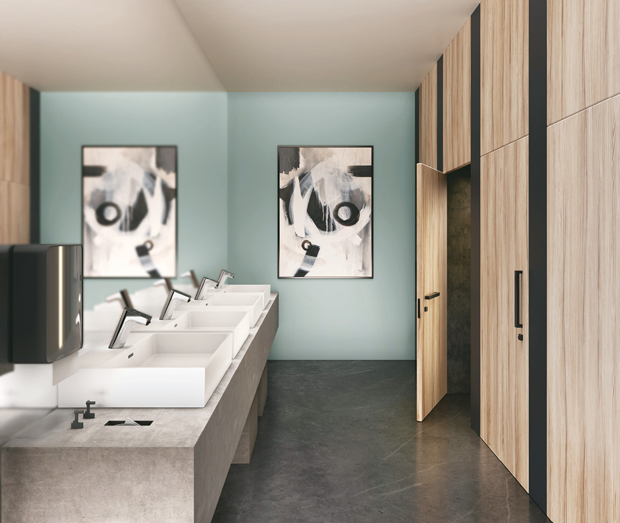 Mike Smelt, UK Non-Residential Product Manager at Ideal Standard International offers advice on the key considerations when specifying gender neutral washrooms
Mike Smelt, UK Non-Residential Product Manager at Ideal Standard International offers advice on the key considerations when specifying gender neutral washrooms
Gender neutral washrooms have arguably had more mainstream attention than any other part of a commercial construction project. This is due to their role as a frequent battleground in political culture wars, as the drive for more inclusive spaces comes up against concerns around safety.
The debate is putting unprecedented pressure on those responsible for specifying and managing washrooms. They now face increasing scrutiny for what is already a familiar part of the specification process given that gender neutral washrooms have been a fixture of many public and commercial spaces, such as coffee shops, restaurants, and workplaces for years (and known as just washrooms).
Whatever the outcome of political and social discussions, there are still particular specification decisions to be made regarding gender neutral washrooms, with a variety of options for architects, specifiers and facilities managers to consider.
THE RULES
The most recent pronouncement from UK policymakers concerning gender neutral washrooms came in May 2024 from the previous government, when ministers proposed plans to mandate that new non-domestic buildings in England must have single-sex toilets, where space allows. The new guidance, covering standard and ambulant cubicles, which came into force from October 1st 2024 for new specifications, could result in a few extra considerations for planned projects, particularly where the previous thinking was for all gender neutral washrooms.
However, following the election, the focus turned to Labour’s plans, which are less clear. The new government has yet to indicate whether the new guidance will continue or not in its current form, although pressure to ensure there are safe spaces for women will not be going away. Despite this, gender neutral bathrooms aren’t going anywhere – many developers are opting to include them in their projects, where space allows, and fully enclosed self-contained cubicles are attractive to either sex from a privacy and comfort perspective.
THE SOLUTIONS
Specifying for gender neutral bathrooms doesn’t require a significantly different approach compared to designing single-sex spaces. Facilities managers and their design teams should put themselves in the minds of users, exploring all the possible reasons that people visit commercial washrooms. Gender neutral washrooms can be the spectacular spaces worthy of the social media selfie, while still being inclusive of everyone.
That doesn’t mean there aren’t specific design choices that will make all users feel safer. Entry and exit points are a good starting point. Where possible, two points of ingress and egress with looping circulation should be included – this always makes for a safer space, but is not always workable, and in these situations, it is worth considering widening the single point of access.
Privacy should be another priority. Toilet compartments should reach from the floor to the ceiling, eliminating any sight lines between compartments and providing those moments of privacy that users look for in washrooms. Occupancy notification hardware is a must-have, and it should be clear and easily operated. Acoustic privacy is an important if trickier ask, however, sound transmission class ratings are a good guide to use for partition materials, especially when combined with sound masking via music or white noise.





